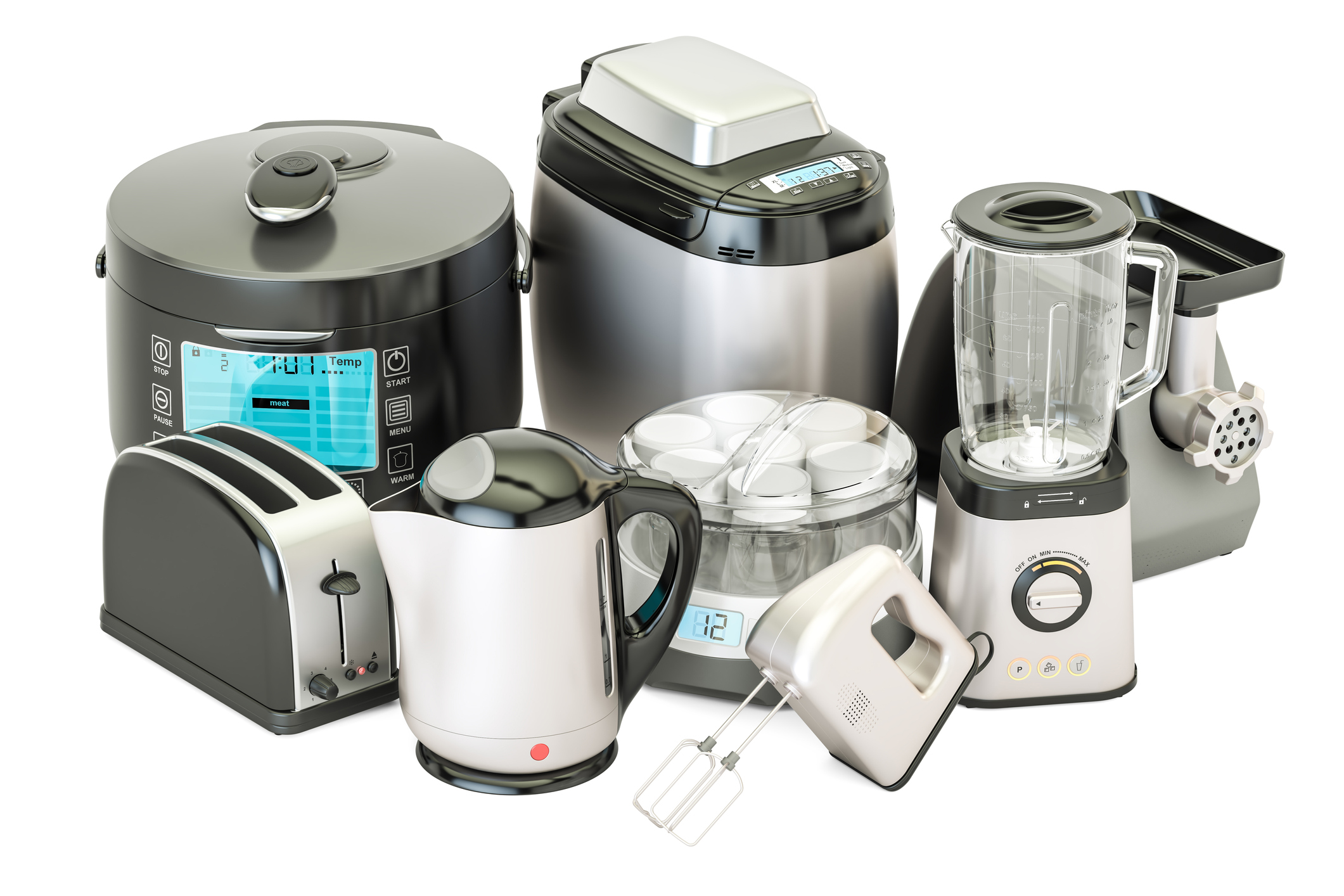In the realm of crafting appliances, the decisions we make at the start really matter. This blog looks at picking the right materials, especially when using a process called plastic
Injection molding. Choosing materials isn’t just a step; it’s a smart decision that affects how long a product lasts and how well it works. This is especially true in the competitive world of appliances. Injection molding is like a key tool. It helps make intricate and effective parts for appliances. It’s great for shaping complicated designs, making it perfect for today’s appliances.
This blog is like a guide for those making appliances. We’ll talk about plastic injection-molding and help you understand the important choices. By the end, you’ll be able to make smart decisions that not only meet what people want but also make appliances in a way that’s better for the world.
Making Stuff Perfect: What is Injection Molding?
- Crafting Cool Things: How Does this Works
Think like creating a puzzle piece. It’s a way to make parts for appliances by injecting melted material into a mold, shaping it precisely.
- Why it is Super for Making Appliances
Imagine making a detailed toy or a tiny piece of your phone. It is amazing for this because it can create complex shapes with super accuracy. This is exactly what we need for modern appliances.
- The Tricks to Get it Right: Making Injection Molding Work Great
Using this is like being a chef in a kitchen. To get the best
results, you need the right recipe. Similarly, to make perfect appliance parts, we
need to follow some important tips. We’ll talk about those so you can get things
just right.
Join us in the next part as we dive into the nitty-gritty of material choices. We’ll explore
why picking the right materials is like choosing the right Ingredients for a delicious
dish—crucial for success.
Choosing the Right Materials for Your Appliances
- How the Material Choice Affects Your Appliance
Selecting the perfect materials for your appliances is a bit like choosing the right tools
for a job. It can make a big difference in how well your appliances work and how long
they last. For example, if your appliance has electronic parts, using materials that are
good at insulating electricity is super important. And if your appliance will be used in a
hot or wet environment, picking materials that can handle that helps ensure it stays in
great shape.
- Making Appliances Fast and Without Breaking the Bank
Imagine you have a magic wand to make appliances. Picking the right materials is a
bit like using that wand wisely. It helps you make appliances faster and without
spending too much money. You want materials that are not only good but also fit
your budget. So, it’s like being a smart magician, making the coolest appliances
without emptying your pockets.
- Keeping Our Planet Happy: Why Materials Matter
The materials we choose for our appliances can impact the environment. That’s why it’s important to pick materials that are friendly to the Earth. We’ll explore options that can be recycled or break down easily, making our appliances not just great for us but also for Mother Earth.
Let’s dive into the specific materials used in this process.
Unveiling the Perfect Materials for Your Plastic Injection Molding for Appliances
- The Core Selection: Must-Have Materials for Molding
Plastic is often used to make appliances, and picking the right materials is really important. Here are specific materials tailored to your industry, addressing the nuances of vertical molding, decoupled molding, and horizontal molding processes
- Versatile Polycarbonates for Vertical Molding Precision
This material, known for its strength and transparency, is an ideal choice for crafting electronic components. Its robust characteristics guarantee not only durability but also the meticulous precision required in vertical molding processes
- Nylon Triumphs in Decoupled Molding Independence:
Nylon offers vital flexibility and durability for independently moving components. Resistant to wear and tear, it ensures both an extended lifespan and enduring performance. Opt for Nylon for robust components in dynamic decoupled molding processes.
- ABS (Acrylonitrile Butadiene Styrene) for Seamless Horizontal Molding:
Renowned for smooth mold filling, ABS ensures uniformity and strength in horizontal molding. Elevate your process with its optimal fluidity and resilience for superior results.
- Precision in Every Mold: Materials Tailored for Vertical Molding Excellence
These specialized choices set the standard for durability and quality, meeting the demands of precision-driven industries:
- PC/ABS Blends for Robustness:
Experience superior robustness with PC/ABS blends—melding polycarbonate and ABS for unmatched strength and heat resistance. Ideal for intricate vertical molding, this blend ensures lasting durability and precision in every component.
- Polypropylene (PP) for Lightweight Precision:
Polypropylene (PP) excels in lightweight precision, balancing robustness for intricate designs in vertical molding. This material is the ideal choice, providing strength and precision synergy for crafting intricate components with finesse.
Decoupled Molding Mastery: Materials Engineered for Independence
In decoupled molding, materials balance flexibility and strength for optimal performance. Engineered for scenarios with independent movements, they ensure efficiency and mastery:
- Polyethylene (PE) for Flexibility:
Polyethylene (PE) excels with high flexibility and low friction, ideal for independent movements in decoupled molding. Tailored for efficiency, it ensures seamless performance, making it the top choice for precise manufacturing in decoupled molding environments
- Thermoplastic Elastomers (TPE) for Elasticity:
Experience the versatility of Thermoplastic Elastomers (TPE), combining rubber-like elasticity with thermoplastic benefits. Perfect for applications requiring paramount flexibility and resilience, TPE offers a harmonious balance, ensuring durability in various scenarios.
Seamless Production with Horizontal Molding: Materials That Flow
In horizontal molding, efficiency is key, and specific materials ensure seamless production with optimal flow. Discover the essential materials defining precision and excellence in this molding technique.
- Polypropylene (PP) for Smooth Flow:
Polypropylene (PP) excels in horizontal molding, ensuring a flawless flow with its excellent flow properties. Tailored for efficiency, it guarantees seamless production through optimal mold filling.
- High-Density Polyethylene (HDPE) for Strength:
High-Density Polyethylene (HDPE) excels in horizontal molding, harmonizing strength and flow for efficient and robust component creation. Dive into HDPE for a powerful solution that ensures both resilience and precision in every molding application
Join us in the upcoming segment, where we’ll unravel the key factors influencing material selection. This knowledge is akin to having a tailored roadmap, guiding your industry towards optimal material choices for efficient, cost-effective, and high-quality appliance manufacturing.
Navigating Challenges in Material Selection for Injection Molding
Potential Issues and Pitfalls in Choosing Materials
- Compatibility Quandaries:
Potential issues arise when selected materials aren’t compatible with the intricacies of this process. Pitfalls include poor mold filling, uneven cooling, and compromised part quality.
- Performance Mismatches:
Mismatched material properties may lead to performance issues, impacting the durability and functionality of the final product. Identifying and mitigating these discrepancies is crucial for optimal appliance performance
Strategies to Overcome Challenges and Optimize Material Selection
- Comprehensive Material Testing:
Conducting thorough testing to understand how materials behave under various conditions. Implementing testing protocols to identify potential challenges before full-scale production.
- Collaborative Design and Material Teams:
Fostering collaboration between design and material teams to ensure a holistic approach to product development. Encouraging open communication to address challenges collectively and optimize material selection.
Crafting Top-Notch Appliances
In the world of making appliances, we’ve seen how choosing the right materials and using cool techniques like injection molding are super important. Picking the right stuff ensures our appliances work well and last long. It is like a superhero move that helps us make appliances with super precision. It’s also cool that we can keep getting better – trying new things and using materials that are good for the Earth. So, keep learning and making awesome appliances that go beyond what everyone expects!



